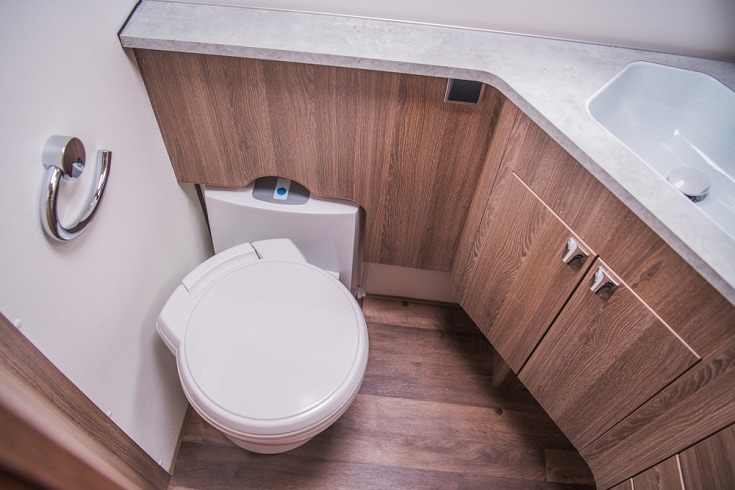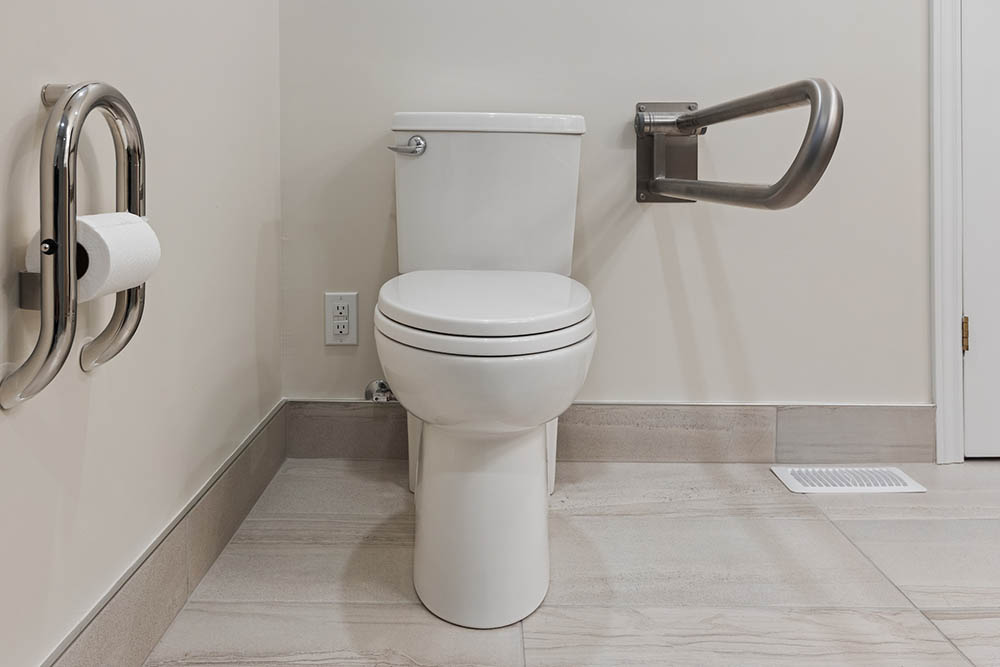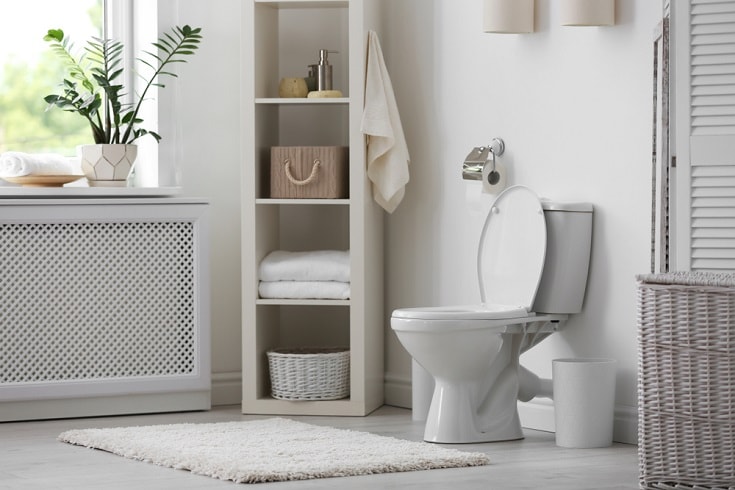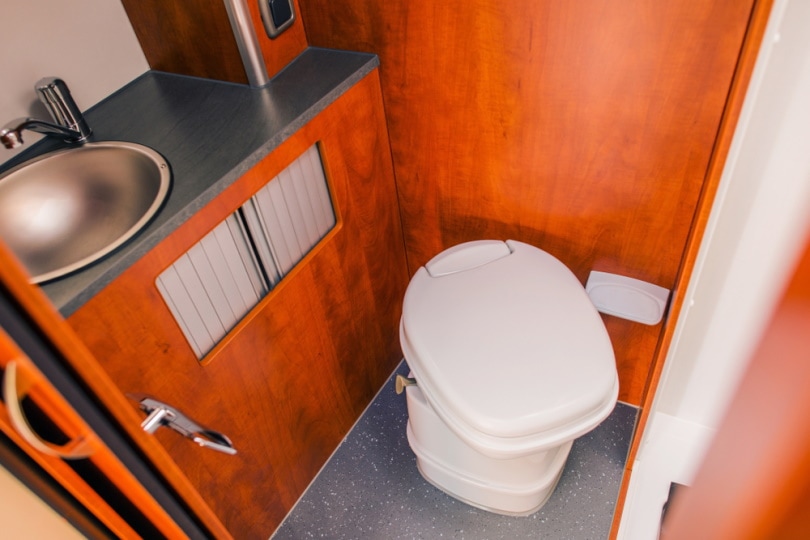What Is a Toilet Macerator Pump? Facts & FAQ
-
Pete Ortiz
- Last updated:

Disposing of human waste is complicated and costly. In 2019, the government spent around $5.5 billion on sewage1 and other related utilities.
With a burdened government, sometimes the available sewage system may not be enough to cater to all your needs. For example, if the municipal sewage line is above the basement, it will be impossible to install a bathroom in the basement and still use the same line. This is because gravity will be against you—unless you are using a macerator pump. To macerate means to pulp something. To be more precise, a macerator pump is a sewage pump designed with blades and an impeller.
What Is a Toilet Macerator Pump?
The blades grind up solid wastes so that they can be easily pushed by an impeller through a discharge pipe against gravity to the main sewer line, holding tanks, or dump stations.
The pump is common in many homes with basement and attic toilets and in fully fitted RVs. It may come as a separate pumping unit or complete with the toilet set (toilet seat with a macerator pump). Irrespective of these differences, all macerator pumps work identically.

How Does a Macerator Pump Work?
A macerator pump has a spigot, a micro switch, rotating blades, and a motor. Furthermore, the pump has a vent connection on top of the kit to let in fresh air, a drain pipe from the shower and sink on opposite sides, a discharge pipe, and a main inlet from the toilet.
The process starts after flushing the toilet. This pushes water and solid wastes through the main inlet’s spigot into the pump. Inside, there is a pressure sensing switch and a micro membrane. As water increases, it exerts pressure on the membrane, which in turn activates the microswitch to turn on the motor. The motor then rotates stainless steel blades at over 3500 RPM to grind all the waste (macerate). Ground particles then fall to the bottom of the case, which are then picked up by an impeller and pushed through the discharge pipe.
The discharge pipe heads to the sewer line and has a no return valve. The valve prevents waste water from flowing back into the pump once the system turns off.
How Do You Select a Toilet Macerator Pump?
1. Design
Being an indoor machine, a macerator pump should be small, compact, and portable. Manufacturers often use heavy-duty molded plastics (propylene) and porcelain, the same material used to make a toilet seat. These materials are long-lasting and resist corrosion.
Besides the casing, a macerator pump has two crucial parts: the grinder and the impeller. A good grinder is made out of corrosion-resistant and hardened materials such as stainless steel to withstand acidic conditions and deal with tough materials. Normally, human excrement and urine are slightly acidic, with a pH of between 6.1 and 6.7. Most pumps will fail in such conditions if not protected with corrosive-resistant materials.
An impeller, in contrast, is the rotating part of a centrifugal pump that generates the pressure needed to carry wastes from the bottom of the case. Similar to the grinder, go for corrosion-resistant and durable impellers. Most customers prefer aluminum to steel impellers because they are lightweight and corrosion-resistant, implying they can work in tough conditions for long periods. Additionally, a lightweight impeller is efficient and requires less power to run.

2. Noise Level
Hearing a macerator pump turn on after every dump is annoying. Instead, the pump should be quiet so as not to disturb homeowners.
A small indoor macerator pump produces between 79 and 85 dB of sound, which is equivalent to a blender’s.
3. Flow Rate
Flow rate is the amount of slurry or water passing through a pump for a given time. You can calculate it by dividing the volume of water in a container and how long it takes the pump to empty.
Large macerator pumps have a flow rate of up to 24 gallons per minute (GPM). This average-sized pump is suitable for modern homes and will work very well when overwhelmed with dirty water from inlets.
Smaller 15 to 12 GPM pumps are suitable for RVs. They can take 10 to 20 minutes to empty a 150-gallon septic tank, saving you time at the dumping station.
4. Source of Power
Indoor macerator pumps run on main grid power or batteries. They are quite similar in aspects except for power ratings.
If you are connected to grid power and certain about its reliability, invest in a 400W+ 110V pump. It is also a mid-sized toilet macerator pump capable of multitasking.
Battery-powered macerator pumps are mostly 12V portable pumps sold as independent units. The pump is excellent for RVs and camping cabins in remote regions without grid connection. To use them, add a 12V battery and battery clips to your shopping list, then follow the user manual on how to set it up.
5. Cost
The price of a toilet macerator pump varies widely. A simple 12V battery-powered RV toilet macerator is available starting at $50 per unit. These pumps are less efficient and not reliable at home, even though they are quite good in RVs.
Toilet macerator pump with four inlets and an outlet rated 110V+ retail at between $300 and $400 per unit. But before installing, calculate the cost of buying and fitting pipes and wiring. A plumber will charge between $175 and 400 per hour, and you may spend over $100 on pipes and wires, assuming you already have a toilet seat and the water tank.
Totaling the cost, you will spend almost $1,000 on a working toilet macerator pump. So to be safe, a modest investment of $1,000 to $1,500 will take care of the whole process.

 Do I Need a Macerator Pump?
Do I Need a Macerator Pump?
A macerator pump is not essential to every home, but there are some instances when the toilet will not run without one.
1. Installing a Toilet in the Basement
Nowadays, folks with large homes are remodeling and partitioning their basements to rent out or create another home within a home. The only problem is plumbing options are limited. Luckily, there is a way out—buying a macerator pump.
2. RVs
The allure to travel the world and live a carefree life is always tempting. Pursue your dreams with an RV complete with a toilet, sink, and a battery-powered macerator pump. Use the pump to empty the septic tank to the dumping station along the way.

3. Vacation Homes and Cabins
There are close to 8 million vacation homes in the USA. These homes are not connected to the sewer system for a good reason—they are only used for a few months at a time and are in remote areas.
4. In Homes With Toilet Clogging Issues
One of the major causes of toilet clogging issues is solid waste. They block joints and reduce flow rate. DIY methods such as a mixture of baking soda, hot water, and dish soap partially alleviate the problem. What if the problem is toilet paper and insoluble waste? Of course, home DIY will be ineffective.
A macerator pump in good condition bbreaksdown solids into a slurry to flow easily through narrow pipes preventing clogging. This is what you need to keep your hand off the dirty mess once the toilet clogs.
 What Is the Main Advantage of a Macerator Pump?
What Is the Main Advantage of a Macerator Pump?
The main advantage of a macerator pump is convenience and saving costs. For instance, if you are remodeling the basement of your home or office and you want to include a toilet, you have two choices. Buy a macerator pump or do a serious plumbing project. The latter is costly and may require approval from authorities.
How Long Does a Toilet Macerator Pump Last?
A macerator pump lasts between 7 and 15 years, depending on traffic. High traffic increases on and off cycles, accelerating wear and tear.
A pump that serves two or three people who rarely use it during the day after leaving for work may last up to 2 decades.
How Far Can a Macerator Pump Go?
Compared to a water pump, a macerator pump has a shorter reach, perhaps because the slurry is heavier. It can pump up to 15 feet high. Keep in mind these dimensions when installing the pump.
How Do You Clean a Toilet Macerator Pump?
Macerators require regular cleaning and maintenance to extend their lifespan.
- Pour a copious mixture of toilet descaler and macerator cleaner into the toilet bowl.
- Flush the toilet to mix the solution with water and push it through the spigot.
- Switch on the pump for a few seconds, long enough to push the solution from the grinder to the impeller. The timing should be perfect to prevent the pump from pushing cleaning solution into the pipes.
- Switch off the pump and let the toilet rest for 2–3 hours. During this time, the descaler will dissolve scale while the macerator cleaner removes grime and dirt. Also, do not flush in more water as the solution rests.
- After 2 hours, turn on the pump and flush the toilet to rinse out all cleaners.
NOTE: Use a macerator cleaner at least once a month if you are using hard water and four times a year for soft water.
Macerator Pump Best Practices
- Make sure you have the right size pump for your needs.
- Take the time to read the instructions carefully before beginning the installation process.
- Be sure to connect the pump to a power source with the required amperage and voltage
- Make sure all connections are secure and watertight
- Test the pump before putting it into use.
In Conclusion
A toilet macerator pump grinds and pushes wastes against gravity. It is a cheap alternative to redesigning the domestic sewer system and is good for basements, attics, and cabins. To buy one, look at cost, flow rate, source of power, and key components’ materials.
- U.S. water, sewage, and other system utilities’ capital expenditure by type 2012-2020.
- What are Macerator Pumps? – Advantages & Disadvantages – QS Supplies.
- How the Saniflo Macerator Pump Works
- Nation’s Stock of Second Homes | Eye On Housing
- The Characterization of Feces and Urine: A Review of the Literature to Inform Advanced Treatment Technology
- Performance Evaluation of a Centrifugal Pump with different Impeller Materials
- 2022 Plumbing Cost Estimates: Leak, Pipe Repair Prices | HomeAdvisor
- Macerator Toilets – Eightfold Property
- How Loud Is 85 Decibels | What Does 85 dB Sound Like.
- Harmful Noise Levels
- Impeller – Wikipedia
Featured Image Credit: Virrage Images, Shutterstock
Contents




